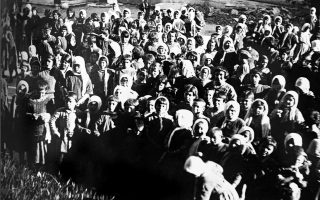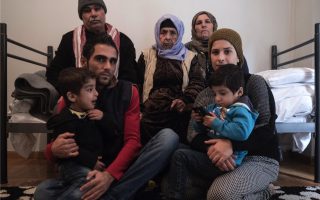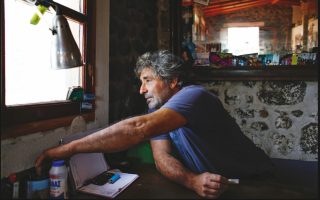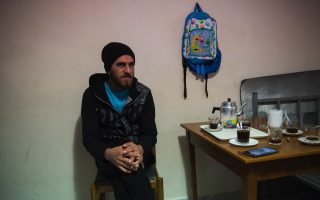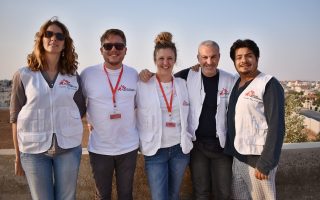As Greek islands heave under influx, refugees turn to old river route
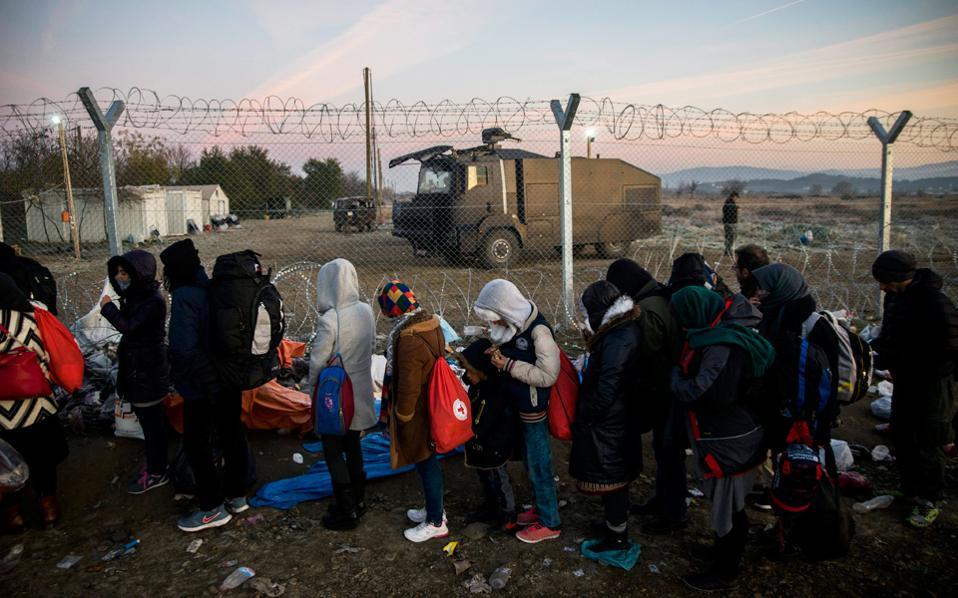
As dawn breaks over the waterlogged plain along the border Greece shares with Turkey, an all-too familiar outline of refugees emerges through the morning haze, picking their way through a road well travelled by thousands before them.
Young parents carrying infants and widowed women following railway tracks they hope will lead them to a town have become a common sight in the fields at Greece's north-eastern border region with Turkey.
"Do not send us back because we ran away from a war," pleaded Maya, 28, from the Syrian city of Aleppo. When a Reuters team caught up with her, she, her father, her sister and her six children had been walking for 13 hours.
Two years after a sea passage used in a mass migration wave from Turkey to Greece's islands was effectively sealed, more and more refugees are re-discovering an old smugglers' route through the watery land border splitting the two countries.
In April alone, at least 2,900 people arrived in Greece via Evros, the river border separating Greece from Turkey. That equals half the estimated arrivals for 2017 overall, United Nations refugee agency UNHCR said on April 27.
New route, revisited
Police and local government officials in the region are worried at the trend. A burst in arrivals, they say, more or less mirror an upsurge in hostilities in either Iraq or Syria.
Nearly a million refugees and migrants crossed from Turkey to Greece's islands in 2015, but that route all but closed after the European Union and Ankara agreed to stop the flow in March 2016.
Under the deal, anyone who crosses to the Greek islands must qualify for asylum or face deportation to Turkey. The accord effectively turned five Aegean islands into cramped holding camps for more than 15,000 people unable to leave until their claims are processed.
The land border does not appear to fall under the agreement, but a UNHCR official cautioned at jumping to conclusions the exclusion actually diverted the migrant flow elsewhere.
Aid workers and police officials told Reuters those who arrive via the Evros river are taken to be registered, and then given a three month resident permit. Theoretically, they are free to move around Greece – unlike those on the islands.
Treacherous waters
About thirty-five refugees from the besieged Syrian city of Afrin took a country road close to the community of Nea Vyssa early in the morning of May 2.
One man cradled a month old baby, Abdu, in a small blue swaddling blanket. A second man strode, a blank look in his eyes as a sleeping toddler bounced around in the pouch he had strapped to his front.
Beyond that, a small blonde girl in pigtails and pink rubber boots scowled as an adult pulled her along the road, clutching a pink ragdoll.
It can take about five to six minutes to paddle one's way across the Evros river, compared to a harrowing journey in the open seas on overcrowded rafts. Yet the fast-moving waters are treacherous.
Before the sea corridor between Turkey and Greek islands became a grave for hundreds of refugees in 2015, Evros had claimed at least 1,500 lives over the past 18 years.
Twelve deaths in the first quarter of the year have outpaced all of 2017 put together, when 8 people drowned, said associate professor of forensic medicine Pavlos Pavlidis.
"I can only hope the number stays there … but we expect the worst has yet to come because the influx has risen," he told Reuters. [Reuters]

